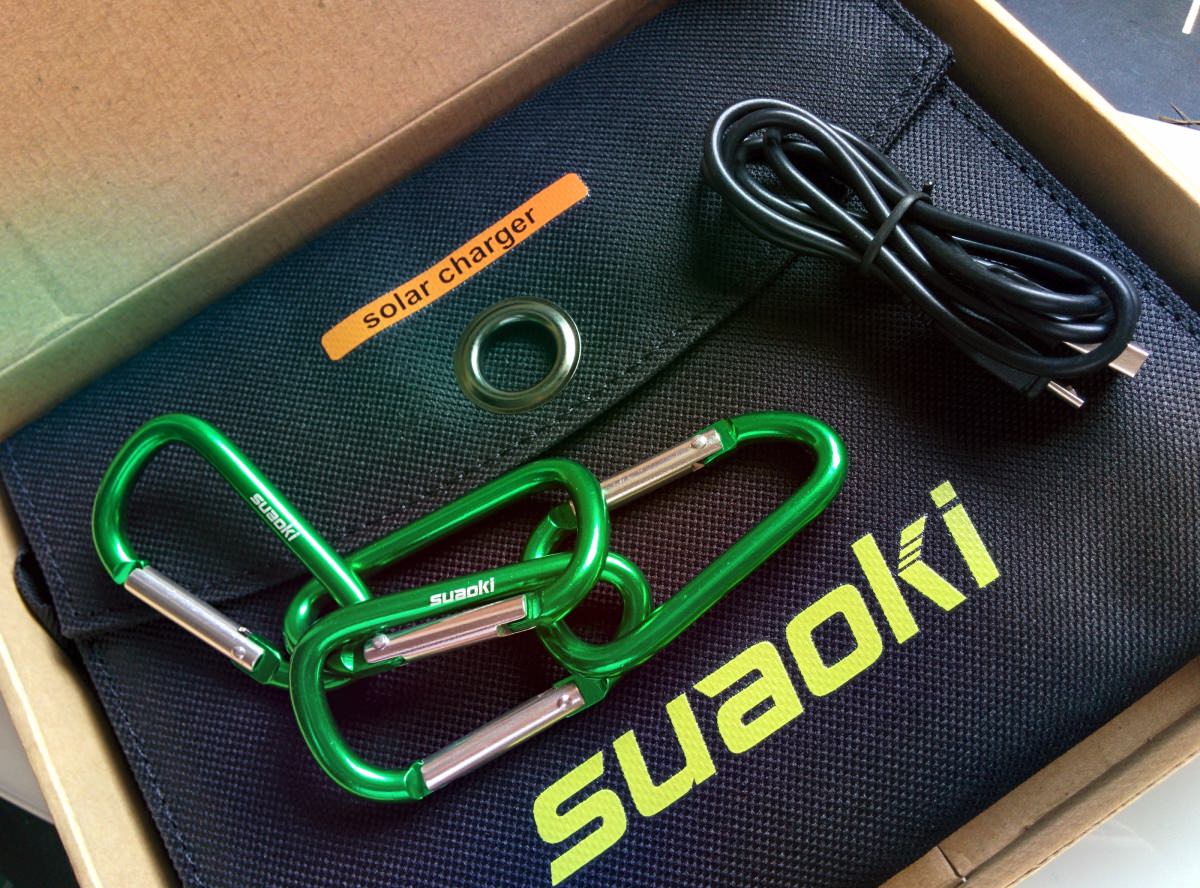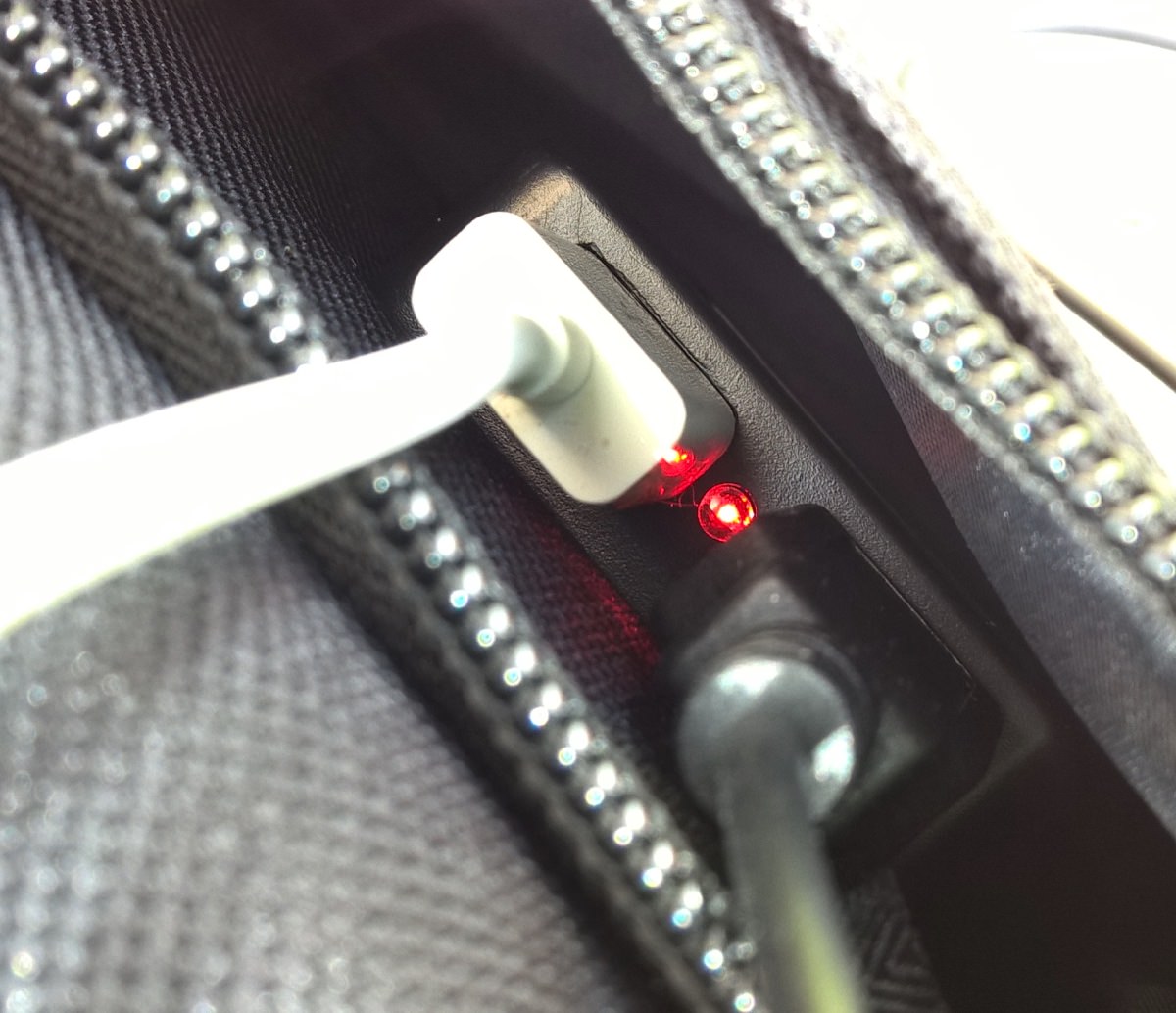Score:
84%
Having played with ‘solar charging’ accessories for smartphones a decade ago, I’d kind of written them off for serious use, but it seems that the technology has improved markedly in the intervening years. The needs of a smartphone (or tablet) have risen too, though matched here by the size of the panels themselves in this hard-wearing polyester, tri-fold, waterproof design. Provided you’re guaranteed some sun, this is a terrific greetings card-sized accessory (when folded) and worked brilliantly in my tests.
Buy Link | Download / Information Link

The 16W Solar Charger comes as a tri-fold polyester package – to give you an idea of scale, the three panels are about 45cm long when unfolded. Carabiner holes (and supplied accessories make it easy to attach this to, for example, the back of a rucksack when out hiking. Or perhaps to the roof of a boat. That sort of thing!

The panels are very slickly sewn into the polyester – there’s an immediate feeling of solidarity – plus I love gazing at the high tech chemical wizardry that is a solar panel. This dense mass of monocrystalline silicon turns light into electricity in (relatively) large, useable quantities, and I still find it very cool indeed(!)
Overall efficiency is ow up to 25%, apparently, which sounds low until you realise that the source is the SUN, so we’re talking about limitless free input energy. Provided the sun is shining, you simply get a set of panels with enough surface area and then you reap whatever current you need. In this case the set of three panels seems about right in terms of balancing performance and portability.

The end panel has a large, zippered pocket sewn onto its back – inside this pocket is a hard wired plastic outlet with twin USB ports and a status LED to let you know that the panels are providing power from the sun.

Why have the pocket at all? Because this is where you’ll want to keep the phones being charged – usually. If the accessory is in full sun for hours then it’s very happy, but your poor smartphone, tethered through its charging cable, needs to be kept in the shade, of course – so many phones and other gadgets get fried on car parcel shelves in hot countries! So you plug in your USB lead, coil it up and tuck the phone (or phones) into the pocket and then leave them to charge.
And what of performance? Well, I’m in the UK, not exactly known for its sun, but we did have a sunny couple of September days, i.e. the sun was low in the sky and relatively weak). Regardless, tested over three smartphones on different OS, the Suaoki 16W Solar panel averaged a charging current of 500mA, with all three panels kept roughly facing the sun through the day.
Peak output from this 16W panel is quoted at 2.1A, meaning that I’m getting about a quarter the power that’s possible – which sounds about right, given that the midsummer sun would be two or three times as radiant and that in much hotter countries I can quite easily believe that the light power received by the panels would be four or more times higher. If not more.
In overcast conditions, there’s still some charging power – the LED lights up easily, but charging current available will be much lower – I’d guess down in the 100mA region. So there would still be some benefit in plugging in while you’re walking over those fells, but don’t rely on a full charge through the day! Solar charger accessories have always been about ‘grab power from the sun while you can’ and use battery back-up chargers or other solutions as your mainstay. In the UK anyway, I’m sure someone in Texas or India or Central Africa will fare more reliably from a professional solution like this.
2.1A, by the way, is an interesting maximum, because it means that even the hungriest tablets can be charged at their full rate (presumably under ideal sunny conditions). In my case, one of the three test devices was a tablet and it trickle-charged just fine at the aforementioned 0.5A (at 5V).
Add in the dual port capability, to charge two smartphones or tablets at the same time (as shown above), according to their needs and it’s clear that the only limiting factor here in terms of powering you ‘off-grid’ is the Sun itself. £33 seems quite decent value too, considering the materials and solar tech included.
PS. There’s an official Suaoki page for this accessory here.
Reviewed by Steve Litchfield at 16:00 UTC, September 11th 2015